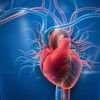Understanding Heart Disease in Children: Causes, Symptoms, and Treatments
- What is Heart Disease in Children?
- Causes of Heart Disease in Children
- Symptoms of Heart Disease in Children
- Treatments for Heart Disease in Children
- Case Studies and Real-Life Examples
- Why Early Diagnosis Matters
- Taking Action for Your Child’s Heart Health
What is Heart Disease in Children?
Heart disease in children refers to a wide range of congenital and acquired heart conditions that affect young patients. These conditions can involve the heart's structure or function and may range from mild to severe. Children born with heart disease may face challenges throughout their lives, while others may develop heart conditions as a result of lifestyle factors, infections, or other underlying conditions.
Causes of Heart Disease in Children
There are many factors that can contribute to heart disease in children. Congenital heart defects are the most common, which means the child is born with a heart condition. These defects can include holes in the heart, abnormal valves, or other structural issues. Additionally, conditions such as Kawasaki disease, infections, and autoimmune diseases can lead to heart disease in children. Lifestyle factors, such as poor diet and lack of exercise, can also play a role in the development of heart problems.
Symptoms of Heart Disease in Children
Recognizing the symptoms of heart disease in children is crucial for early diagnosis and treatment. Common symptoms include unusual fatigue, rapid breathing, bluish skin (especially around the lips and fingertips), poor feeding in infants, and frequent respiratory infections. Children may also experience chest pain, swelling in the legs or abdomen, and fainting spells. If you notice any of these signs, it's important to consult a healthcare professional for further evaluation.
Treatments for Heart Disease in Children
Treating heart disease in children depends on the type and severity of the condition. For congenital heart defects, surgery may be required to repair structural issues, while other children may benefit from medication to manage symptoms. In some cases, heart transplants are necessary for children with severe heart failure. Cardiac rehabilitation and lifestyle changes, such as a healthy diet and exercise regimen, are also important components of managing heart disease in children.
Case Studies and Real-Life Examples
Consider the case of a young girl, Emma, who was diagnosed with a congenital heart defect shortly after birth. Her parents noticed her difficulty breathing and frequent episodes of fatigue. After undergoing surgery to repair a hole in her heart, Emma made a remarkable recovery. Her case highlights the importance of early detection and medical intervention in treating heart disease in children. Another example is a young boy, Lucas, who developed Kawasaki disease and experienced inflammation of the heart vessels. Thanks to prompt treatment, Lucas was able to recover and lead a healthy life.
Why Early Diagnosis Matters
Early diagnosis of heart disease in children can significantly improve the prognosis. Detecting heart conditions early allows doctors to provide timely interventions, whether through surgery, medication, or lifestyle changes. This proactive approach helps prevent complications and ensures that children can lead healthy, active lives. If your child shows any signs or symptoms of heart disease, it's essential to seek medical advice as soon as possible.
Taking Action for Your Child’s Heart Health
As a parent, it's essential to stay informed about the signs of heart disease in children. Maintaining regular pediatric check-ups, encouraging a healthy lifestyle, and monitoring any unusual symptoms can help protect your child’s heart health. By acting early, you can ensure that your child receives the care they need to thrive. If you're concerned about your child's heart health, consult with a pediatric cardiologist for a comprehensive evaluation and personalized treatment plan.




















